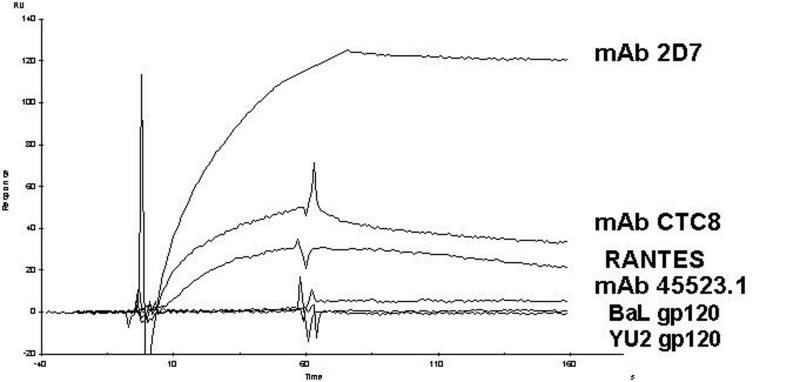

Figure 15. Sensorgrams depicting binding of mAbs CTC8, 2D7, and 45523.1, the chemokine RANTES, and monomeric gp120 (BaL and YU2) to CCR5 reconstituted within a DMPC-cholesterol bilayer. The ability of CCR5 in a DMPC-cholesterol environment to bind these ligands implies the exposure of the amino terminus, extracellular loop 1 (ECL1) and extracellular loop 2 (ECL2). The inability of the monomeric gp120 proteins from two different isolates (HIV-1BaL and HIV-1YU2) to bind to CCR5 in this context probably reflects both an inability of monomeric gp120 to bind to CCR5 and the lack of a gp120-binding-competent CCR5 conformation. Continued efforts looking at specific lipid requirements in conjunction with solubilization condition optimization should lead to the efficient display of CCR5 and other important GPCRs on biosensor surfaces.